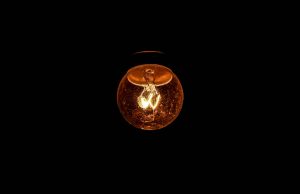
Thomas Edison submitted his patent for the light bulb in October 1878. He is widely known as the inventor of the light bulb but this is not entirely correct. There were over 20 ‘inventors’ of the light bulb dating back to 1802, far before Edison. So why does Edison get credit? He was the first one to make a commercially viable lightbulb. His lightbulb was longer lasting, as he removed the air from from the bulb so the filament wouldn’t burn up. It was much more energy efficient than the gas burning lamps used at the time, and it was relatively easy to manufacture. Finally, his bulb produced far less heat than the aforementioned gas lamps. These qualities are still the benchmarks of lighting technology today. If a new technology wants to replace the old, it has to improve on some or all of these aspects.

Incandescent, Fluorescent and LED bulbs
Source: Google Free to share
Over the years we have seen three main generations of lighting technology; incandescent lamps, compact fluorescent tubes and most recently light emitting diodes or LEDs. While Edison’s incandescent bulbs were a huge step forward from gas lighting, they still only convert 5-10% of electrical energy to light while the rest is lost as heat. Compact fluorescent tubes are much more energy efficient, able to convert 75-85% of energy to light while lasting 10-15 times longer. Because of this, they are commonly used in large buildings, hospitals and office spaces. LED technology surpasses all of its predecessors, converting around 90% of energy to light and lasting 10 times longer than fluorescent bulbs.
One major roadblock preventing LEDs from taking over the lighting industry is their high manufacturing cost. Many experts hope that one day, this obstacle can be overcome with OLED (organic light emitting diode) technology. OLEDs differ from conventional LEDs as they use organic, or carbon containing molecules as a light source.
OLEDs have the advantage of being thin and flexible allowing them to be made into nearly any shape. They also produce a much wider range of colours, which has made them ideal for display screens. The newest generation of iPhones and LG TVs are being made with OLED technology.
The video below explains the light source in OLEDs.

LED has been given a while to mature as a technology, while OLED is relatively new and has a lot of room for improvement. Today’s OLED lights are less efficient than LED lights (25-50 lumens per watt vs 90-100 lumens per watt), but are still far superior to incandescent bulbs. Blue OLEDs also don’t last quite as long because fluorine is used in the molecule, making it quite unstable. Manufacturing OLEDs currently can cost an order of magnitude more than LEDs. Despite carbon’s abundance, many of the colours involve trace amounts of rare metals, such as iridium.
Christopher Brown is a chemist at the University of British Columbia. He joined us in the podcast below to discuss how he thinks this cost can be reduced, and the future of lighting technology.

